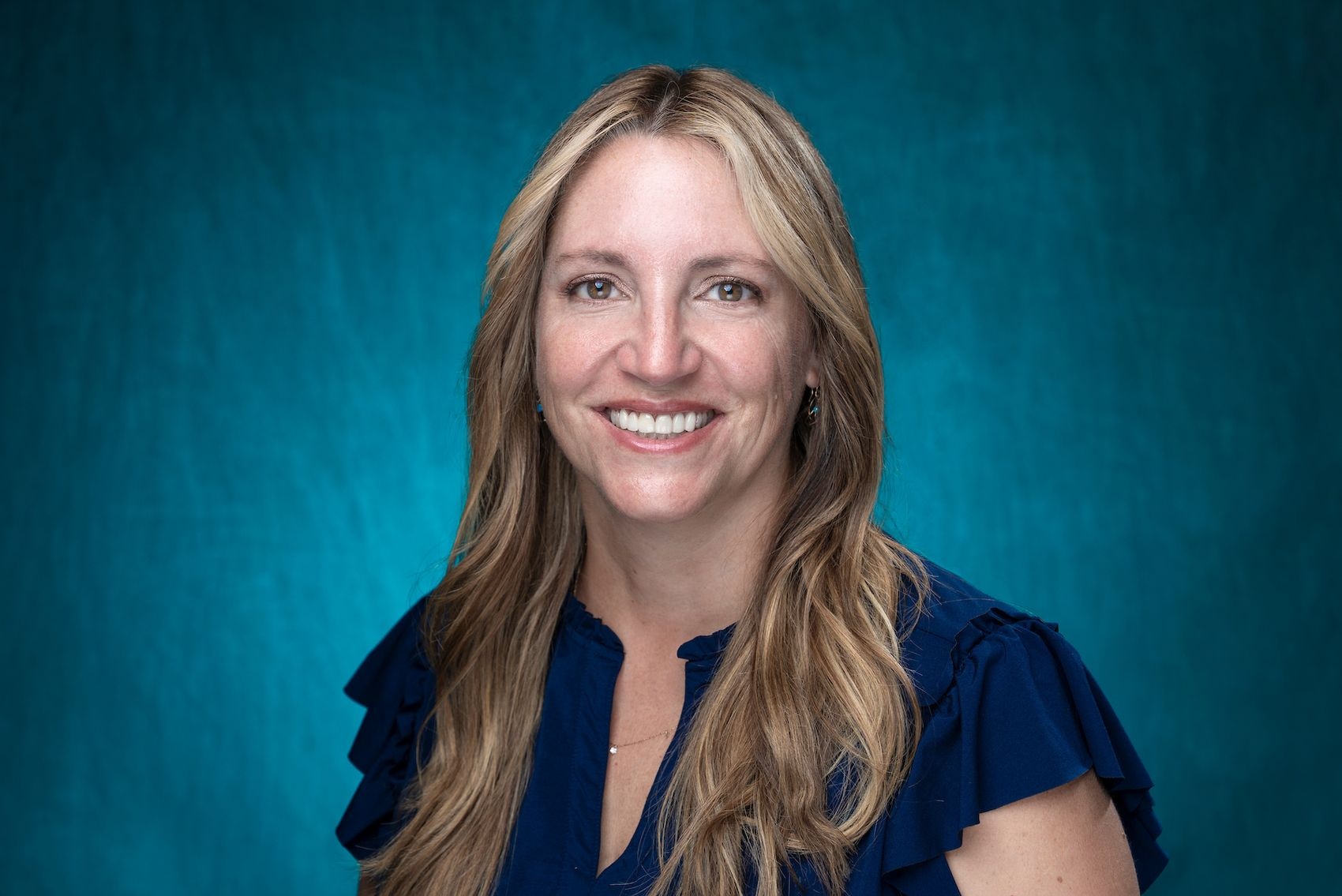
Photo: JeffJanowski/UNCW
Laurie Minns, assistant professor of clinical research in the School of Nursing in the College of Health and Human Services began her journey into clinical research shortly after earning her PhD in immunology from Geisel School of Medicine at Dartmouth. While studying inflammatory bowel disease, Minns began exploring the clinical research field. Driven by a desire to improve the lives of patients, she began to focus on clinical trials and translational research.
In 2019, Minns expanded her focus to include cancer quality of life research when her spouse was diagnosed with glioblastoma, an aggressive and terminal brain cancer. Glioblastoma multiforme (GBM) is the most common brain cancer with an incidence of 3.19 per 100,000 cases with more males affected than females. The incurable nature of the disease, disease progression, and poor prognosis (median survival is 12-18 months) leads to a very high caregiver burden. (1)
“Despite coming from a place of pretty good medical knowledge and having a strong research background, it was surprising to me how little had been done within this space,” Minns said. There was minor activity in the development of new therapeutics and a lack information provided to caregivers. The reason for the lack of caregiver-focused support is believed to be partly due to the rarity of the disease.
After one of Minns’ friends created a letter writing campaign to medical professionals to inform them of what their world looked like following a glioblastoma diagnosis, she and her team turned those letters into meaningful data. Using her background in research design and data analysis, Minns began working with McNeill Distinguished Professor Barbara Lutz in the School of Nursing who is skilled at qualitative research methods and design. As a result, Minns was able to publish their data in the British Medical Journal Open.
Building on this research, Minns and her colleagues will adapt a caregiver readiness assessment originally created for stroke caregivers, called the Preparedness Assessment for the Transition Home (PATH). They will work with caregivers of patients with high grade brain tumors to develop new questions specific to caring for patients with high grade brain tumors. “We’re beginning to see a change in how the research community views the quality of life of patients with brain tumors. We know if caregivers are prepared and they know what to expect, then that directly impacts the quality of life of the patient affected by their cancer,” Minns said.
Adapting the PATH will include collaboration with faculty within the UNCW School of Nursing, a diverse team of external advisors including caregivers and medical providers, and UNCW student researchers to gather feedback from caregivers and conduct psychometric analysis of the adapted instrument. Minns’ research team includes clinical research and nursing students who contribute literature reviews, data analysis and poster presentations. Alaina Doss, a nursing major and Anna Vreeling, a clinical research major who are part of Minns’ Council on Undergraduate Research (CUR) Scholars Transforming Through Research (STR) team are also working on this project. Additionally, Minns has a First-Year Research Experience (FYRE) student and another clinical research student who joined the team this spring.
The success of this research led to the team securing a grant from the National Brain Tumor Society, in partnership with StacheStrong, for $200,000 to support the team’s ongoing research efforts. Looking forward, Minns is optimistic about the future of high-grade brain tumor research and their caregivers. “It’s important to preserve the quality of life of these patients as much as possible,” Minns said. “Thankfully, the agencies funding research agree. Finding a team-based approach with caregivers is going to be essential.”.
1. Davis M. Glioblastoma: Overview of Disease and Treatment. Clin J Oncol Nurs. 2016;20:1-14
This article has the following tags: School of Nursing Research & Faculty Affairs College of Health & Human Services


